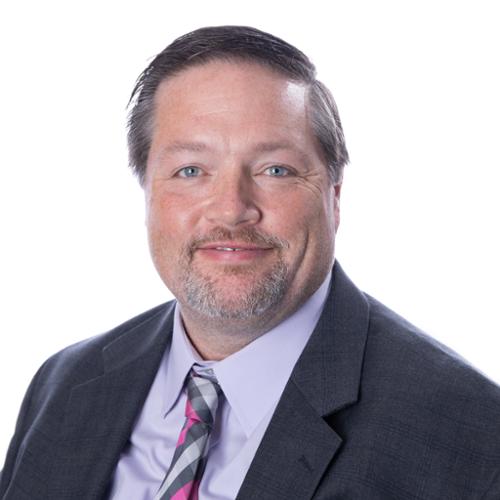Navigating the Healthcare Staffing Shortage: How Employers Can Adapt and Overcome
Across the nation, healthcare organizations are confronting an urgent and growing challenge: there simply aren’t enough providers to meet the needs of patients. From large health systems to rural clinics, staffing professionals are navigating an increasingly complex and competitive hiring landscape—especially when it comes to physicians, advanced practice providers (APPs), and nurses.

The workforce shortage, intensified by the long-term effects of the COVID-19 pandemic, continues to evolve. Addressing it requires not only immediate action but also a long-term, strategic approach to recruitment and retention.
A Crisis Years in the Making
The U.S. is on track to face a shortage of up to 124,000 physicians by 2034, according to the American Hospital Association. At the same time, demand for healthcare services is rising, fueled by an aging population and increasing chronic disease prevalence. As Becker’s Hospital Review reports, healthcare leaders are being asked to do more with fewer resources—managing provider burnout, tightening budgets, and fluctuating patient volumes all at once.
Key workforce pain points include:
- Primary care and rural medicine: Persistent gaps in access continue to widen as fewer providers are willing to work in underserved regions.
- Advanced practitioners: APPs are increasingly relied upon to lead care delivery, support team-based models, and extend reach in high-demand areas.
- Nursing workforce instability: High turnover, burnout, and the appeal of more flexible contract roles are drawing nurses away from traditional staff positions.
These staffing challenges not only increase recruitment costs and lengthen hiring timelines but also impact clinical quality, patient outcomes, and staff morale.
Understanding the Root Causes
Several interconnected factors are contributing to the staffing shortfall:
- Retirement and workforce aging: A significant portion of the current healthcare workforce is nearing retirement, and replacing this clinical expertise is no small feat.
- Pipeline limitations: Medical and nursing schools face capacity limits, and many qualified students are unable to match with residency programs or clinical placements.
- Burnout and disengagement: Excessive workloads, administrative burdens, and a lack of autonomy are prompting many providers to reduce hours or leave clinical roles altogether.
- Geographic imbalances: Talent remains concentrated in urban areas, leaving rural and underserved communities at a disadvantage.
- Changing career expectations: Today’s providers are seeking more flexible work arrangements, better compensation packages, and clear pathways for professional growth.
Insights from TotalMed and 3B Healthcare reinforce the urgency of addressing these dynamics with forward-looking strategies and adaptable recruitment practices.
How PracticeMatch Helps Employers Move Forward
As 3B Healthcare notes, "But even as job creation skyrockets, a major concern looms: the industry is struggling to fill critical roles fast enough to meet rising demand." This growing gap between opportunity and availability is where PracticeMatch provides essential support.
We partner with healthcare organizations nationwide to strengthen recruitment pipelines, improve hiring outcomes, and reduce time-to-fill for high-priority positions. Our integrated services include:
- Comprehensive candidate databases: Access one of the largest networks of actively seeking and passive physician and APP candidates across the U.S.
- Targeted recruitment marketing: Increase visibility and attract qualified applicants through digital advertising, employer branding, and social media engagement.
- In-person and virtual career events: Connect directly with candidates at PracticeMatch-hosted career fairs, which offer opportunities to build relationships and expand your talent pool.
- Consulting and strategy support: Leverage our recruitment expertise to refine job postings, streamline workflows, and ensure alignment with evolving provider expectations.
Looking Ahead: Building a Sustainable Workforce
Addressing the healthcare staffing shortage requires more than quick fixes. To remain competitive and continue delivering high-quality care, organizations must evolve how they recruit, retain, and support their clinical teams.
By adopting a proactive and data-informed recruitment approach—and working with a trusted partner like PracticeMatch—employers can better anticipate workforce needs, engage the right candidates, and secure long-term staffing stability.
Discover how PracticeMatch can support your team’s recruitment goals: Physician and Healthcare Recruitment Services | Medical Doctor Staffing

Clint Rosser is the CEO of PracticeMatch. He has been with PracticeMatch since 2016. He has overseen several departments within PracticeMatch including Inside Sales, Career Fairs, and the Client Services team. Clint, along with his team, has helped elevate PracticeMatch client services to move past a transactional vendor relationship to a full partnership with clients. This has allowed PracticeMatch to build stronger relationships and work with clients closer to ensure they can achieve the most ROI possible.
Prior to Joining PracticeMatch, Clint has been in Client service leadership roles for over 20 years. Clint serves as an AAPPR Board Member for Strategic Corporate Sponsors.
References:
Becker's Hospital Review. (2024, June 18). 51 healthcare leaders’ takes on doing more with less. https://www.beckershospitalreview.com/hospital-management-administration/51-healthcare-leaders-takes-on-doing-more-with-less/
3B Healthcare. (2024, February 14). Healthcare workforce shortage 2025. https://3bhealthcare.us/healthcare-workforce-shortage-2025/
TotalMed. (2024, May 20). Top healthcare workforce trends to watch. https://www.totalmed.com/blog/top-healthcare-workforce-trends-to-watch